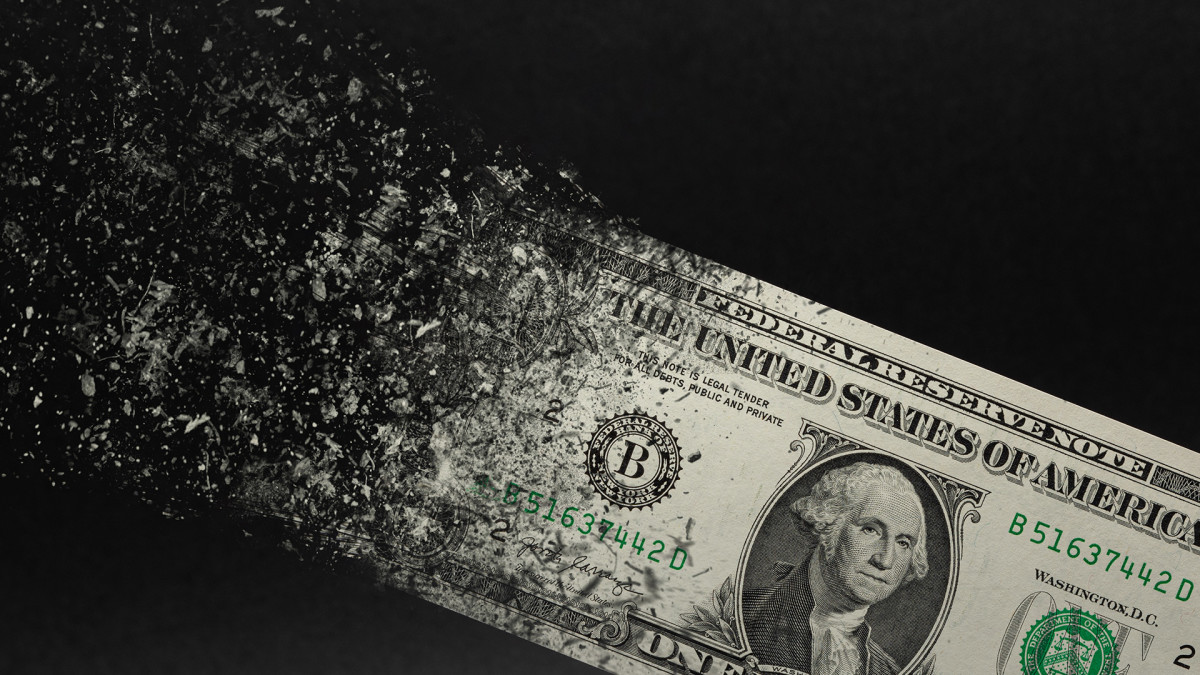
The most commonly used trope in any horror movie, good or bad, is the murdering antagonist roaring back to life moments after seemingly being slayed by the hero – or very often heroine – in the film's final moments.
From the eponymous "Dracula" in the early 1930s to Jason and "Friday the 13th" in the mid-1980s and the "Scream" series of films in the early 2000s, a seemingly mortally wounded monster rising from the floor for one last stab (often literally) at the protagonist is a surefire Hollywood trope guaranteed to curl the toes, crawl the skin and set off screams of terror around the cinema.
Inflation, the monster lurking under the bed of virtually any central banker over the age of 40, was looking prone on the ground only a few months ago. Headline readings had fallen to just over 3% in June, down nearly 6 percentage points from the prior year's peak. And it was looking to fade further into the distance as the credits rolled on the Federal Reserve's long-running battle to tame it with the most aggressive rate hikes in a generation.
But like Jason and the others, it's back. And its angry and it's ready to cause a lot more market chaos between now and year-end.
A twin set of bond auctions this week underscored market concern that inflation hasn't been slain and, in fact, could accelerate into the autumn months.
Bond investors balk: a bad inflation portent
Fixed income investors, the most-sensitive to inflation spikes, balked mightily at the Treasury's two big bond sales this week, with demand falling to multiyear lows at Wednesday's sale of $35 billion in new 10-year notes and today's auction of $20 billion in 30-year bonds.
The 30-year sale, which offered the highest auction yields since 2007, still produced a meager bid-to-cover ratio of 2.35, down nearly 5% from the previous sale in September. (Bid-to-cover is the amount of bids received for the amount of bonds on offer.)
The so-called tail – the difference between the presale yield and the auction yield – was 3.9 basis points (0.039 percentage point), one of the longest on record, as investors balked at buying the longer-dated paper in the auction's final minutes.
Benchmark 10-year note yields leaped to around 4.71% following the long-bond sale, pushing stocks sharply lower on Wall Street and triggering early discussions about what the Federal Reserve might do next.
Yields have retreated somewhat in early Friday trading, with 10-year notes slipping to 4.64%, but 2-year notes remain firmly above the 5% market, supporting market bets on an end-of-year Fed rate hike.
Bonds follow the arc of a Hollywood script
The auctions, as luck would have it – and almost as if scripted by Stephen King himself – bookended a mixed reading for the September consumer-price index, which showed headline inflation sticking at 3.7% and core prices easing to 4.1%.
But set against a worrying jump in wholesale prices, published earlier this week by the Commerce Department, and another stronger-than-expected reading of weekly jobless claims, investors are starting to look over their shoulders for the rise of the inflation beast they all thought had been put to rest earlier this summer.
In fact, the International Monetary Fund, playing the role of elderly neighbor who warns the blissfully dismissive teenagers of impending doom, reminded everyone that inflation remains a threat to global growth. The report came in the IMF's World Economic Update report, published Tuesday.
"Despite economic resilience earlier this year, with a reopening rebound and progress in reducing inflation from last year’s peaks, it is too soon to take comfort," the IMF said.
Meanwhile, the University of Michigan's benchmark consumer sentiment survey for October, published Friday, came in below market forecasts amid the highest reading for inflation expectations since May.
CME Group's FedWatch, which tracks the odds of near-term Fed rate hikes, pegs the chances of a November move at just 8.6% but suggests a near 40% chance of either a quarter- or half-point increase at the Fed's final meeting in December.
Minutes from the Fed's September policy meeting, published Wednesday, also hinted at the likelihood of one final rate hike to close out the year. Such a move would take the benchmark federal-funds rate to between 5.5.% and 5.75%.
"Core prices easing will be welcome by the Fed, though trends there will be watched closely given tightness in the housing market despite high policy and mortgage rates," said Andrew Patterson, senior economist at Vanguard.
"Nothing to change our expectation of 1 to 3 more Fed hikes over the next few quarters until the hold at their ultimate terminal until at least late next year," he added.
"We have greater conviction in our higher-for-longer call than the number of additional hikes that will be needed."
Others see 'for longer' but not likely 'higher'
Others argue that the data likely cement only the "for longer" half of the "higher-for-longer" rate thesis. They cite current inflation reports, as well as the long run of stronger-than-expected jobs data, which included last week's blowout nonfarm-payrolls report.
The data haven't "done anything to move the needle on inflation or the interest rate outlook," said Mike Loewengart, head of model portfolio construction, Morgan Stanley Global Investment Office. "The odds may favor the Fed leaving rates unchanged at its November meeting, but rates are still likely to remain high for the foreseeable future."
"The Fed is going to want to see a renewed, sustained trend of falling prices before it changes its stance," he added.
So, much like a good Hollywood slasher flick with the two uneasy allies arguing their fate as the monster lurks towards them, the markets will continue to debate the fate of the Fed's inflation fight for another few months.
The only mystery left to unveil is whether that monster is left on the roadside for a happy ending – or hiding in the truck for a sequel.
- Get investment guidance from trusted portfolio managers without the management fees. Sign up for Action Alerts PLUS now.







